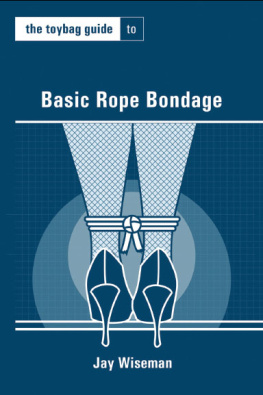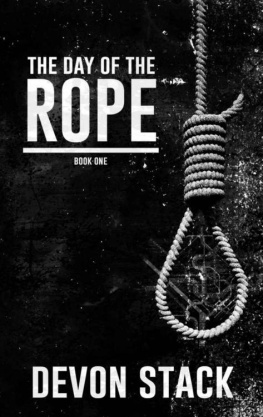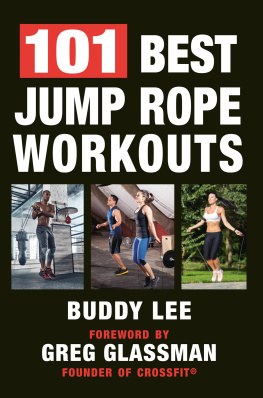
Copyright 2014 by Evelyn Vane. All rights reserved.
Cover design by David Delp, Creative Director, pilotfire.com.
Cover photo by -Mr-D-. All photos throughout the book are used with permission.
No part of this publication may be reproduced, stored, or introduced into a retrieval system, or transmitted, in any form or by any means (electronic, mechanical, photocopying, recording, or otherwise), without the prior written permission of the author.
The scanning, uploading, and distribution of this book via the Internet or via any other means without the permission of the author is illegal and punishable by law. Please respect the hard work of the author by keeping your copy for your use only.
ISBN 978-0-9998276-2-8
v. 1.0
This book contains explicit material and is intended for mature audiences. All photos are of the author and depict entirely consensual scenes.
Also by Evie Vane:
Better Bondage for Every Body
Authors Note and Disclaimer
Much of this book is subjective; its based on my experience and whats come across my radar. I am a 44-year-old female whos 5 feet, 2 inches tall and weighs 115 pounds, and who regularly stretches and does crunches. On a good day, I get a nice walk in or maybe even a jog or some light free weights, but mostly I sit at a desk all day. My experiences getting tied up will be much different from a 260-pound 6-footer who cant touch their toes or a 20-something circus aerialist. Every single body is different, and you should never do anything that does not feel right for you or your body.
Im not a doctor, an anatomy expert, or a fitness pro. My tying skills begin and end with my shoelaces. I live in San Francisco, and my access to the international rope scene is limited. Im not claiming to be an expert on rope bottoming (the rope communitys term for getting tied up); I just love it and do it regularly, and was heartbroken by the number of preventable injuries happening. Ive made many dangerous mistakes because there was no book like thisand I see other people making the same ones often. Hopefully reading this will help you stay safe.
Rope bottoms before me have paved the way for this, sharing their insight with others even when getting tied up was much less understood and accepted than it is today. We should all appreciate their efforts even if we never know all of their names and faces. Thanks to them and other pioneers in the BDSM community, education about rope and other BDSM practices has become much more widespread and accepted on a greater scale.
This is only one small contribution to those educational efforts, a not-exhaustive guide. I urge you to do as much other research as possible and to explore complementary areas, such as other BDSM practices, yoga, tai chi, tantra, and meditation. Please know this also:
You and you alone are ultimately responsible for your safety in rope.
Not your rope top (the person who does the tying). Not your class instructor. Not any author. By reading this book, you absolve me of any and all liability should you experience a rope-related injury. Use the information herein at your own risk.
Note on terminology: I use rope top, rope bottom, and the gender-neutral plural they for a single person, because these seem to be the simplest and least offensive terms to the greatest number of people. Other terms for rope top are rigger, rope artist, and nawashi (a Japanese term generally used to mean rope artist.) Other terms for rope bottom are rope bunny, rope model, rope kitty, and even rope slut and rope whore. Substitute in your mind whatever term makes you happy. Personally, I dont give a hoot what anyone calls me as long as the tying is good.
Introduction
Rope tops have plenty of resources: books, videos, YouTube tutorials, frequent classes on everything from playful bedroom bondage to advanced Kinbaku/Shibari techniques, conferences, private lessons. Rope bottoms? Not so much. Searching online for rope bottoming is a lot like calling into an empty canyon. (See for some notable exceptions.) Classes are not nearly as prevalent as for rope tops. And if you search the web for getting tied up, wellbe sure to duck before all the porn whacks you in the face.
The assumption of people new to rope is often, Hey, it doesnt take any skill to just lie/stand there and get tied up, does it? Well, yes and no. Sure, you can get tied up without any skill other than wearing your skin well. But certain skills will help you stay safe and have more fun. Here you will learn, among other things, what I consider the 7 Helpful Skills of Rope Bottoming. Those skills apply whether your wrists are bound to the headboard or youre hanging from a meat hook by one ankle.
Will you need the same level of skill for every rope scene? Of course not. Common sense and experience should tell you what level of preparation youll need for different scene intensities. But with rope bondage, as with any kind of BDSM play in which you can be seriously injured, its a good idea to be more prepared and skilled than a scene calls for.
Riggers often use a safety factor of 10 when evaluating equipment and hardpoints for suspensions. (The hardpoint is the piece that supports all of the bodys weight, like an eyebolt screwed into a ceiling beam.) If the person being suspended weighs 150 pounds, for example, then the gear and hardpoint need to be able to support 1,500 pounds (10 x 150), just in case. I urge you to use a similar safety factor when evaluating your own equipment (your experience, your bodys abilities, your mental and physical state) for any given scene. Being overprepared is better than being underprepared in my book.
Which brings us to our first warning. Youre going to get a bunch of these. Do not gloss over them like you would the 10-page user agreement for your latest app. The safety warnings are here because rope can be very dangerous and even fatal! If you dont believe me, set up an account on . Say it with me:
Warning: Rope can be dangerous. You could experience injuries from rope that last from hours to years. You could die from rope bondage.
Got it? Good. Now that is not to scare you off. The people who have died from doing rope bondage generally were doing insanely irresponsible things (such as doing risky ties alone or while drunk or on drugs), or they had preexisting health conditions, or another part of play (such as intentional asphyxiation or strangulation) was the fatal factor. Ill offer safety tips throughout the book, but for now just absorb this mantra and repeat it every time the rope calls to you:
I will approach rope bondage with mindfulness.
Congratulations, youve just discovered Helpful Skill No. 1: Mindfulness. More on that in . Being mindful and possessing the other skills wont guarantee that you wont get injured or even die. But they will increase your chances of doing a rope scene safely and in a more fulfilling way.
The 7 Helpful Skills of Rope Bottoming are:
1. Mindfulness
Being Prepared
Trusting Your Instinct
Knowing Yourself
Communicating with Your Rope Top
Making a Connection
Being Always Curious
Keep in mind that these skills are subjective, not set in stone. Feel free to develop your own or not use any that dont resonate with you. Well discuss each of them in depth later on, but first lets cover the basics: defining your experience, learning about different types of rope scenes and rope itself, and finding and evaluating a rope partner.
Chapter 1
Shaping Your Desires
Lets look at three scenariosall negotiated and consensual, of course. If youre new to BDSM, make sure to read up on consent before you do rope or any other kind of play.
Next page










